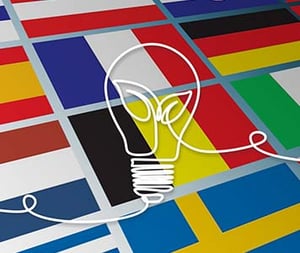Applying for a patent in Belgium or abroad? This is what you need to know

Flemish cleantech companies are setting their sights on sustainable innovation. Protecting these innovative technologies is crucial. The best way to do that is with a patent. But when can you file a patent application? Where is the best place to file that application? And is it advisable to file a patent application in Belgium? We talked about this with our collegue Jeroen Meesters.
When to file a patent application
If you are working on an innovative product or an innovative method or application in the cleantech sector it is best to protect it with a patent. But when exactly can you file that patent application?
"You can only apply for a patent once your product, process or application is sufficiently concrete," Jeroen Meesters explains. "This means that you must be able to implement it and so you should preferably have a working prototype."
Are you going to protect your cleantech with a patent application in Belgium or elsewhere?
Once you have developed your invention to a sufficient degree, you are ready to take the first step towards proper protection: drafting and filing a patent application. But where is the best place to file it? According to Jeroen, this depends on your product and the markets you want to enter. On top of that he stresses that it is not always desirable for Belgian companies to file an application in Belgium.
"If you want to market your invention in several countries, it is better to file an English-language application in the Netherlands first. Unfortunately it is not possible to do this in Belgium where Flemish cleantech companies have to file their application in Dutch, Walloon companies in French, Brussels-based companies can choose between both national languages and companies in German-speaking areas have to file their application in German. So if you want to file a follow-up European application from Flanders that follows on from a Belgian patent application you will have to provide a translation.
On the other hand, if you protect your innovation in the cleantech sector with a Dutch patent application in English you will be able to file a European application without the need for a translation. If that European patent application is granted, the European patent will split into a bundle of national patents, so to speak. This patent is then automatically validated in Belgium. In this way, you bypass the language requirements for obtaining a Belgian patent."
Belgium, the Netherlands or Europe: the best protection for your innovation in the cleantech sector
While there are differences in the language requirements for filing a patent application in Belgium and the Netherlands, there are also similarities in the processes that apply in the two countries explains Jeroen:
"Both Belgium and the Netherlands have a registration system. This means that the patent granting authority grants the patent after registering the application, irrespective of the content of the novelty search that follows the application. This is even the case when that search is critical of the innovative and inventive nature of your cleantech."
A European (follow-up) application will always be assessed before it is actually granted. According to Jeroen a European patent is therefore more valuable than a Belgian or Dutch one.
What is the process involved in a patent application?
Unless you want to target a specific market, the country where you file your patent application is not crucial. What is crucial, however, is your filing date as this determines the rest of the process involved.
"The filing of your patent application is followed by a novelty search. You will receive the results of this after about 9 months on average. You will then have several months to decide whether and how to proceed with your application and in which countries.
After 12 months from the filing date you can submit a national, European or international (PCT) follow-up patent application. In the case of the international process, you can postpone the choice of countries by 18 months. From the filing date you will then have 30 months to decide where you eventually want to apply for protection.
Following the PCT process is a well-known strategy because it allows you to keep all options open. You also have an additional opportunity during the PCT phase to improve your application before entering the national and/or regional phase, especially if the novelty search is critical in relation to some aspects. Needless to say, every case is different and therefore requires customisation. A specialised Patent Attorney can provide you with the correct advice on this."
Costs and tax-related issues associated with the protection of your innovation in the cleantech sector
Finally, in the cleantech sector the costs involved in protecting your innovation can also play a role when it comes to deciding where to file your patent application.
"If you file a patent application in Belgium, you will pay about €500 less in official government fees compared to the Netherlands. For a European or an international patent application you will pay about €4,000 more in official government fees. In Belgium, on the other hand, you can take advantage of the innovation income deduction. This provides for an 85% corporation tax reduction on profits from your innovations."
If you are an innovator in the cleantech sector then you should make sure your intellectual property is properly protected and let an EP&C specialist help you with this. Why not contact us by filling in and schedule a free introductory meeting with your Patent Attorney.

About the author
My journey into intellectual property started during my graduation project on nanotechnology at IMEC, where I first encountered the world of patents. The seamless intersection of technology and law...
More about Jeroen >